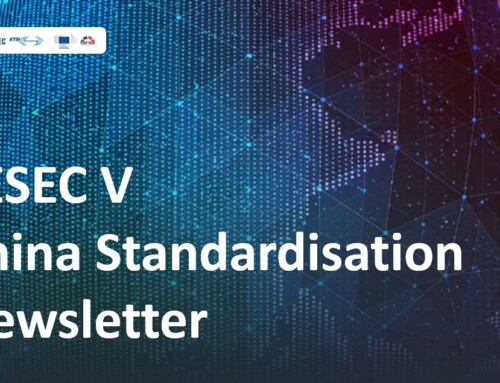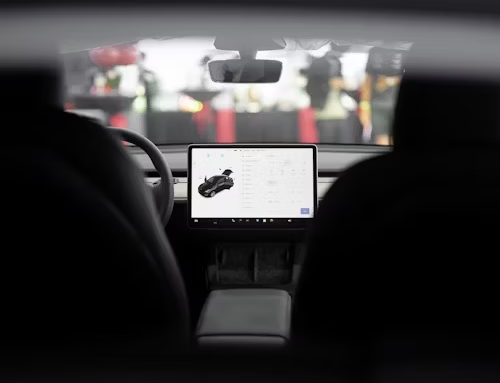On September 27, 2024, the China National Institute of Standardization (CNIS) released the Development Report on Standard Essential Patents 2024 (hereinafter referred to as the Report). The Report outlines the rule-based framework and practices surrounding standard essential patent (SEPs) in major international organizations (e.g., WIPO, ISO, IEC and ITU) and key economies (Europe, China, the US, UK, Japan, and South Korea). To assist foreign stakeholders in understanding the SEP landscape in China, SESEC has summarized the information in the Report as follows.
Statistics of SEPs in China
Government-issued standards: The incorporation of patents is relatively uncommon in China’s government-issued standards, including national, sector, and local standards. As of December 31, 2023, China had 44,499 national standards (comprising mandatory standards, recommended standards, and guiding documents); among these, only 144 (0.32%) involved patents, covering 661 patents in total. Among these, 464 are inventions (70.2%), 19 are utility models (2.87%), and 95 are in the process of patent application (14.37%); 83 lack specific patent information.
Market-driven standards: Market-driven standards in China mainly consist of association and enterprise standards. According to the National Association Standards Information Platform, as of December 31, 2023, a total of 8,445 organizations were registered as association standard development organizations; these had published a total of 74,240 association standards, of which 4,409 (approximately 6% of the total) involved patents. Furthermore, 938 of these association standard development organizations developed association standards that included patents, representing 11% of all group standards developers.
Rule-based framework for disclosure and licensing commitment
In June 2023, China’s State Administration for Market Regulation (SAMR) released the Draft Anti-Monopoly Guidelines on Standard Essential Patents (SEPs) (hereinafter referred to as the Draft), soliciting public feedback. Articles 5 and 6 of the Draft address SEP information disclosure and licensing commitments. Once implemented, these Draft will complement existing frameworks, including: the Interim Provisions on National Standards Involving Patents, GB/T 20003.1-2014 Special procedures for the development of standards—Part 1: Standard related to patents, and GB/T 1.1-2020 Directives for standardization—Part 1: Rules for the structure and drafting of standardizing documents
Additionally, GB/Z 43194-2023 Disposal guidelines for patents related to association standards (effective since September 2023) further clarifies patent information disclosure for association standards in alignment with the Management Regulations for Association Standards, GB/T 20004.1-2016 Social organization standardization—Part 1: Guidelines for good practice, and GB/T 20004.2-2018 Social organization standardization—Part 2: Guidelines for evaluation of good practice.
Regulations and practical guidelines for licensing negotiations
Government Regulations: Article 7 of the Draft introduces China’s framework for SEP licensing negotiations, emphasizing good-faith negotiation as a cornerstone of fair, reasonable, and non-discriminatory (FRAND) principles. The guidelines propose a structured four-step process to guide SEP holders and implementers during licensing negotiations.
Practical guidelines: In addition to these government regulations, industry-led initiatives are shaping licensing practices. Of particular relevance, in September 2022, the China Automotive Technology and Research Center and the China Academy of Information and Communications Technology jointly released the Automotive Standard Essential Patent Licensing Guide, providing useful tips and principles for automotive-specific SEP licensing. Furthermore, in April 2024, under the guidance of the Beijing Municipal Intellectual Property Office, the Operating Guidelines for Standard Essential Patent Licensing were published, providing a comprehensive framework for SEP licensing principles, negotiation steps, and determination of royalty rates.
Legal basis for dispute resolution
China’s Patent Law, Anti-Monopoly Law, and Standardization Law serve as the legal foundations for addressing disputes related to SEP infringement, monopoly practices, and other conflicts. Key articles in these laws guide judicial and administrative bodies in resolving such cases.
By establishing clear guidelines for good-faith negotiations and FRAND-based licensing, China aims to balance the protection of patent rights with accessibility, benefiting both SEP holders and implementers. This structured framework provides foreign stakeholders with critical insights into SEP management in China, encouraging informed participation in the country’s evolving standards environment.




